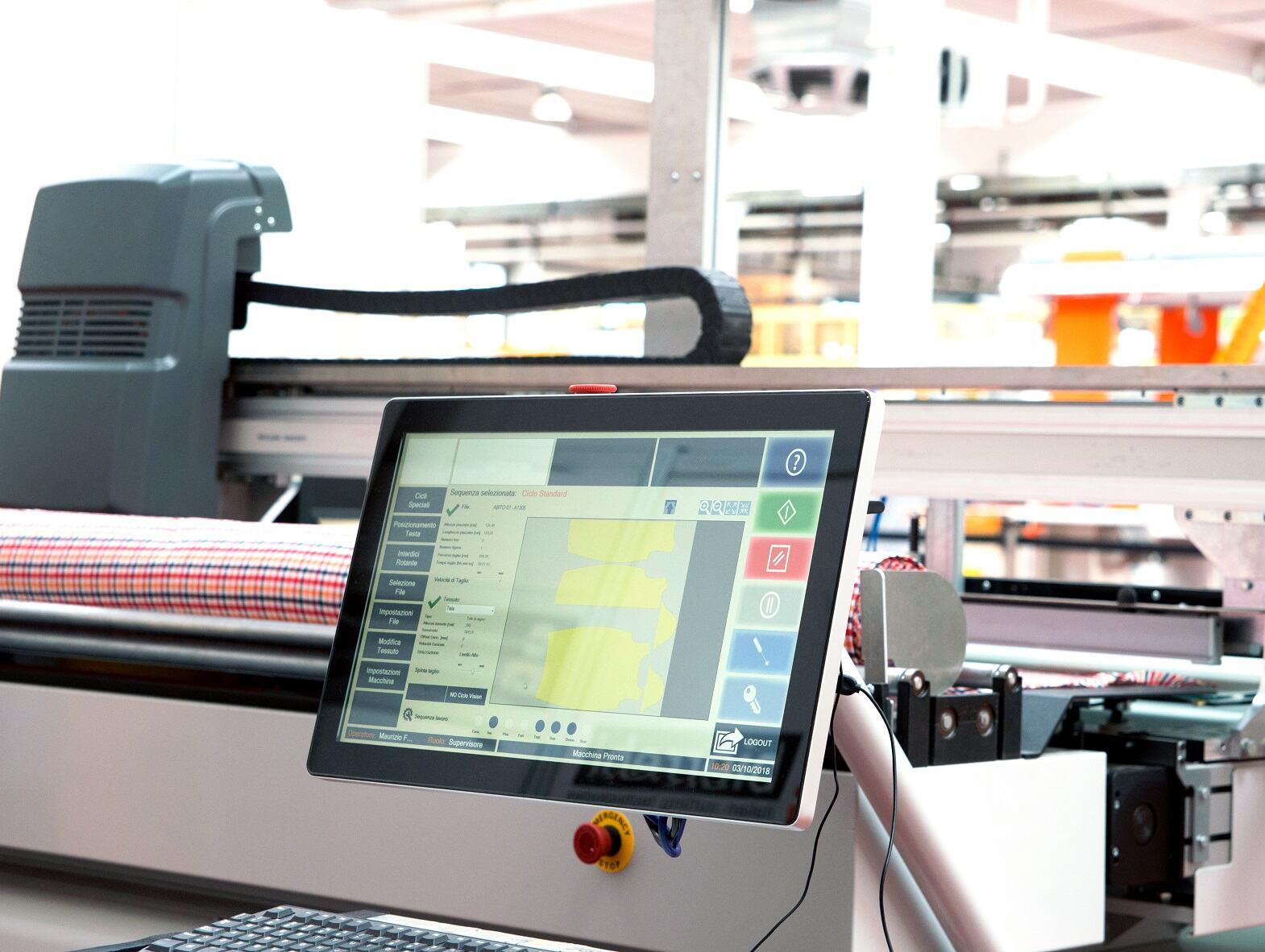The Evolution of Garment Manufacturing
Before the industrial revolution, garments and textiles were made by hand using manual techniques. They were derived from natural raw fibres such as wool, cotton, silk, flax, and hemp. These fibres were collected, cleaned, and spun into yarn. Natural dyes, extracted from plants, insects, and minerals, were used to add colour. The yarn would be woven or knitted into fabric and then finishing processes including washing, stretching, and pressing took place to enhance the textile’s appearance and durability. This process of making fabrics was extremely labour-intensive, time-consuming and limited in output.
This all changed during the industrial revolution with garment manufacturing transforming in an astronomical way. Through the developments of steam power and advanced machinery, production processes were mechanised, textile mills were built, and fabrics could now be produced at remarkable speeds. The industry moved away from handloom (the process involving humans weaving fabrics absent of any machinery) and implemented mechanised production, resulting in lower costs, increased productivity and the ability to mass produce. This resulted in the traditional labour-intensive nature of garment manufacturing slowly being phased out, as artisans were replaced with factory workers operating powerful machines. In the process, the industrial revolution propelled garment manufacturing into a new era, laying the foundation for the modern textile and fashion industry that exists today.
As garment manufacturing evolved, so did its environmental and ethical impact. Firstly, the fast fashion model prevalent in garment manufacturing is dependent on overconsumption and excessive production. The industry focuses on quick turnarounds and low-priced clothing, leading to a throwaway culture that results in a staggering amount of textile waste. Garments are now being discarded after only a few uses, with as much as 92 million tons of clothing ending up in landfills each year1, contributing to landfill pollution and resource depletion.
There are also ethical concerns associated with garment manufacturing, especially exploitative labour practices, including low wages, long working hours, and unsafe working conditions. Many garment workers, particularly in developing countries, endure these conditions, which violate their basic rights and contribute to social inequality. In fact, garment workers in Bangladesh are currently demanding an increase in minimum wage from $75 per month to $207-$226 per month2, a more realistic figure, especially with inflation soaring across the country.
Additionally, the global supply chains in garment manufacturing involve extensive transportation, resulting in high carbon emissions and air pollution. Raw materials are often sourced from one region, manufactured in another, and then distributed globally, contributing to the industry’s significant carbon footprint.
Automation in Garment Manufacturing
Advancements in technology, such as robotics, artificial intelligence, and machine learning, are reshaping the way that garments can be manufactured. With automation, various processes can be streamlined, from fabric cutting and stitching to quality control checks and packaging. By reducing human intervention, automation can improve production efficiency, reduce errors, and enhance product consistency. Furthermore, smart machines can analyse data in real-time, optimising production schedules and inventory management. As automation continues to evolve, it can offer the textile industry advancements surrounding greater precision, scalability, and sustainability, paving the way for a future where technology and craftsmanship seamlessly coexist.
The Importance of Automation
The advancements that automation could bring to garment manufacturing are vital as the textile industry makes notable efforts to address its environmental and social impact. Retailers and brands no longer have a choice and are therefore adopting more eco-friendly practices. These practices include prioritising sustainable fibres, evaluating their water and energy consumption and efficiently managing their waste and chemical output throughout the supply chain.
There is also a growing emphasis on circularity within the industry, with an emphasis on recycling, upcycling, and garment longevity. Transparency and ethical sourcing are gaining traction with brands disclosing their supply chain information to ensure fair labour practices. This transparency is becoming more important in the industry as consumers push for sustainable fashion and demand greater accountability from fashion brands.
Consumers play a vital role in the industry’s sustainable transition. By actively seeking out brands that prioritise fair trade and ethical manufacturing processes, they can push brands to act responsibly throughout their supply chain. This rise in conscious consumerism has been enabled by social media and online platforms which have empowered consumers to share information and advocate for sustainable fashion.
How can Automation Impact Sustainability in Garment Manufacturing?
Resource Efficiency
Automation can promote material utilisation and resource efficiency in garment manufacturing. This is because by using automated cutting systems, patterns can be precisely analysed, optimising the layout of fabric pieces and therefore, minimising material waste. Through advanced algorithms and computer vision, these systems identify the most efficient way to cut patterns from the fabric, reducing scraps and maximising the yield. This results in significant savings in fabric consumption, costs, and waste generation.
Automation also enables efficient inventory management. By connecting automated machinery with inventory systems and real-time data, manufacturers can accurately track and control the usage of the materials they have used. Furthermore, automated processes can generate alerts when stock levels are low, preventing production delays and reducing the risk of overstocking. In fact, overstocking is a major problem in the fashion world, with around 20 per cent of clothing, i.e., over 100 billion pieces3, remaining unsold each year.
Additionally, automation can enhance production efficiency through faster and more precise manufacturing processes, eliminating human errors and reducing the need for rework. It can also enable predictive maintenance and machine optimisation by monitoring machine performance, detecting anomalies, and scheduling maintenance before breakdowns occur. This proactive approach reduces downtime, optimises machine utilisation, and extends the lifespan of equipment, which allows for resource and cost savings.
Best known for footwear, fashion giant Nike is fully embracing automation to improve resource efficiency. Nike has transformed its supply chain by deploying over 1,000 collaborative robots - ‘cobots’, to assist Nike workers and serve customers more directly at scale. “Using artificial intelligence and machine learning, Nike says it is leveraging technology to forward-position the products that consumers love most and deliver faster, more precisely, and without compromising sustainability.”4 Brands like Levi Strauss & Co are also known to be using robots to develop their clothes, leveraging automation to streamline processes, minimise waste, and improve overall resource efficiency.
Energy Conservation
Automation can promote energy conservation in garment manufacturing, contributing to a more sustainable and environmentally friendly industry. Automated systems are designed to optimise energy usage, employing advanced technologies such as variable frequency drives, smart sensors, and power management algorithms. These features enable precise control over energy consumption, reducing waste and improving overall efficiency. By replacing older, energy-intensive machinery with automated, energy-efficient alternatives, manufacturers can achieve substantial energy savings and therefore reduce their greenhouse gas emissions.
Automation also allows for the implementation of energy management systems and smart controls which can monitor energy usage, identify energy-intensive processes or equipment, and provide insights for optimisation. Automated controls can regulate energy usage based on demand, automatically turning off equipment when not in use or adjusting power levels to match production requirements.
Patagonia has been automating its processes over the years and is experiencing the positives; by implementing automation in its warehouses, the company has prevented bottlenecks due to peak seasons, increased worker efficiency by 20 per cent and cut energy consumption by almost 30 per cent5. Integrating automation can therefore help fashion giants take significant steps towards reducing their environmental footprint and promoting sustainable energy practices.
Supply Chain Transparency and Accountability
Automation facilitates enhanced traceability and transparency throughout the garment manufacturing supply chain. By integrating automated systems and digital technologies, it becomes easier to track and document each stage of production, ensuring adherence to sustainability standards and ethical practices. These systems and technologies enable consumers to make informed choices, supporting brands that prioritise transparency and accountability in their supply chains.
Many fashion brands are now using RFID (radio frequency identification) tags to track their products throughout the supply chain. RFID tags use small barcodes to identify items and are part of a group of technologies known as Automatic Identification and Data Capture (AIDC). Brands including Adidas, H&M, Tommy Hilfiger and Kering6 are just a few companies which are using these tags to promote the transparency of their products. Having an automation-driven approach enables better communication and collaboration, enabling fashion giants to proactively address social and environmental concerns, and build trust with consumers and stakeholders.
Enhanced Worker Safety and Well-being
Contrary to common misconceptions, automation can enhance worker safety and well-being in garment manufacturing by creating a safer and more conducive working environment for employees. By replacing or assisting workers in performing physically demanding, repetitive, or hazardous tasks, automation reduces the risk of workplace injuries and improves overall worker health.
Automation can be used to carry out monotonous, physically demanding or repetitive tasks such as material handling, lifting, and transferring heavy loads. This would reduce the need for manual labour, minimise the risk of injuries and allow workers to focus on more skilled related tasks, meaning they can prioritise more meaningful and intellectually stimulating work, enhancing their engagement, job satisfaction, and overall well-being.
Adidas is utilising automation to promote social responsibility in its supply chain. The company has implemented automated systems for repetitive tasks like material handling, reducing the risk of injuries associated with manual labour. By automating these processes, the brand ensures a safer working environment for its employees. Additionally, Kim Kardashian-founded-shapewear brand, Skims has also employed the use of autonomous robots to perform menial jobs including fetching packages to allow employees more time to process orders and track inventory, alleviating them from physically strenuous lifting and stacking.7
Job Safety and Automation
The integration of automation in the textile industry has the potential to promote sustainability throughout the industry, however, it also presents uncertainty for those working in garment manufacturing. An estimated 300 million work in the clothing industry8 and with automation, there is the potential for job displacement as machines and robotics replace human workers in repetitive and labour-intensive tasks. This could lead to millions facing unemployment and there would arise a need for reskilling en masse so that workers adapt to the changing technological landscape. Additionally, companies may seek to reduce expenses and downsize their team due to the upfront costs of automation implementation. There are also concerns relating to the pace of automation adoption outpacing the ability of the workforce to adjust, which could potentially lead to social and economic inequalities.
However, if brands take the right steps, automation can ensure job protection in the textile industry. If a strategic and responsible approach is taken, as mentioned, automation can help to streamline processes, increase productivity, and reduce costs, leading to improved competitiveness and sustainability. This, in turn, would help businesses maintain their market position and therefore, enable job stability. Additionally, automation can lead to new job opportunities in areas such as technology development, maintenance, and data analysis.
Additionally, brands and retailers can promote job security by investing in upskilling and reskilling programmes that allow their workers to adapt to technological advancements and take on higher-value roles. By combining the strengths of automation with the expertise and creativity of the workforce, the textile industry can achieve a balance that ensures job protection while embracing the benefits of automation.
Conclusion
Automation could be the much-needed catalyst for transforming garment manufacturing sustainably and ethically. By embracing automation technologies, garment manufacturing can undergo enhanced efficiency, reduced waste, improved worker safety, minimising the industry’s environmental impact. Embracing automation in garment manufacturing is not just a technological advancement; it is a vital step towards achieving sustainability goals and reshaping the textile industry to allow style, ethics and the environment to harmoniously exist together.





20240924091633.png)







Comments